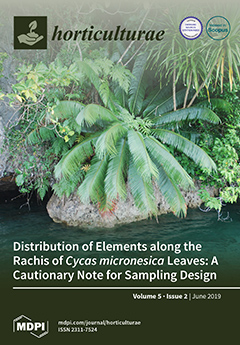Water scarcity in many semi-arid agricultural areas, in particular for the Mediterranean basin, is promoting changes in irrigated agriculture, with alternative strategies being introduced for water-use optimization. The coast of Granada and Malaga (Southeast Spain) is an economically important area for subtropical fruit
[...] Read more.
Water scarcity in many semi-arid agricultural areas, in particular for the Mediterranean basin, is promoting changes in irrigated agriculture, with alternative strategies being introduced for water-use optimization. The coast of Granada and Malaga (Southeast Spain) is an economically important area for subtropical fruit cultivation. This intensively irrigated agriculture is characterized by requiring extra amounts of water and the adoption of sustainable practices to improve agricultural water management. A two-season experiment was conducted to assess (1) the water use in terraced cherimoya (
Annona cherimola Mill. cv. Fino de Jete) orchards under conventional and organic production systems with drainage lysimeters, and (2) the impact on fruit yield and nutritional effects between the two considered production systems. Crop coefficient (
Kc) values for cherimoya were 0.60–0.66, 0.64–0.71, and 0.48–0.62 at flowering, fruit set, and fruit growth, respectively. Fruit yield was similar in both systems, ranging from 47.1 for conventional to 44.1 kg tree
−1 for organic farming, averaging 13.2 and 12.3 t·ha
−1, respectively. No differences between these systems were observed in terms of leaf nutrient status, with variations in the N, P, and K contents during the different phenological stages. The N, P, and K lessen during flowering and fruit growth; the highest levels of these nutrients were fixed at harvest. These patterns were the opposite in Ca and Mg, ascribable to the antagonism between K and both Ca and Mg. Thus, these findings highlight the need to establish the optimal use of irrigation water with respect to crop requirements, thereby encouraging sustainable subtropical farming in terraces.
Full article





